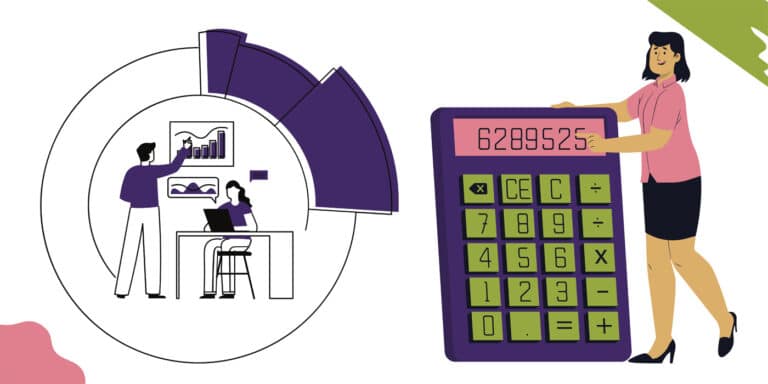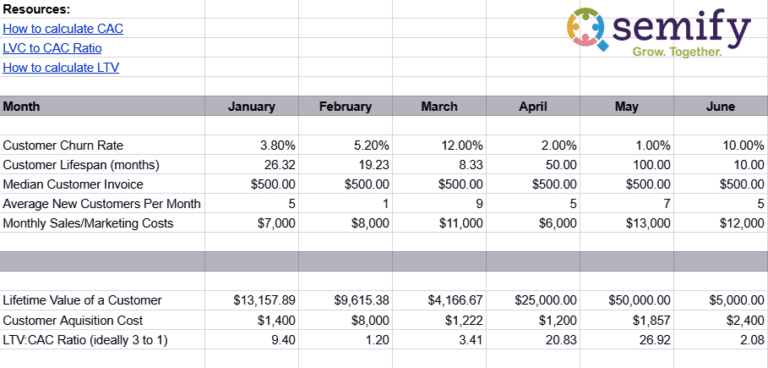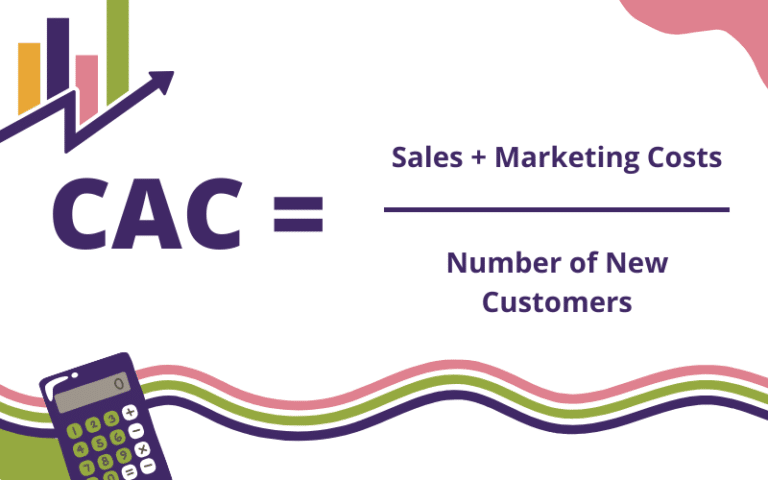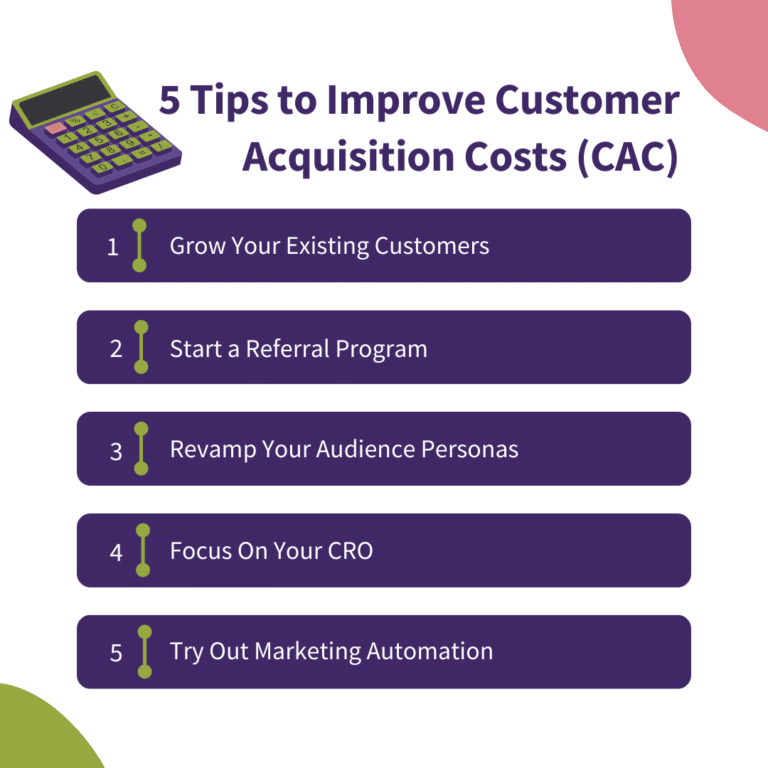
Acquiring new customers for your agency can be tough enough. But what if you’re spending too much (or too little!) to attract those customers?
When you feel like your profits are at a standstill and you don’t know what you’re doing wrong, it may be time to take a closer look at your customer acquisition costs. Understanding the impact of CAC – and knowing how to reduce it – can get you on the right track to boosting profitability for your business.
What is CAC?
CAC stands for Customer Acquisition Cost. This represents the total monetary amount that a company spends (in terms of both sales and marketing costs) to acquire a new customer over a specific period of time.
Keep in mind that these costs include not only marketing spend (i.e., paid advertising, SEO, marketing emails) and sales tactics (lead generation programs), but also things like employee salaries and any overhead costs that relate to attracting and converting leads. Don’t forget to factor in things like software systems, technical and creative costs, bonuses or raises for your marketing and sales team, and other creative or production costs.
When you calculate your Customer Acquisition Cost, you’re determining how much you’ll spend to generate a lead and turn them into a customer during a given timeframe.
Why Does Customer Acquisition Cost Matter?
You might have a vague idea of how much you’re spending on customer acquisition, so why do you need to use a precise customer acquisition cost formula?
If you care about your bottom line (which, let’s face it, every agency owner does!), you need to have a more accurate understanding of how much you’re investing in your marketing and sales efforts. Knowing whether you’re over-investing – or under-investing! – in your customer acquisition process can help you improve profitability and reduce inefficiencies.
When you know how to calculate and improve CAC, you can stop wasting time and money on leads that won’t pay off in the end. Without tracking this metric, you could find yourself in an endless cycle of paying too much for poor-quality leads that lead to high customer churn.
What’s the Difference Between CAC and LTV?
CAC isn’t the only metric businesses use to figure out their relative investment in new customers. Customer Lifetime Value or Lifetime Value of a Customer (sometimes expressed as LVC, CLV, LTV, or CLTV) also plays a role in determining how much a given customer is worth to your business.
Whereas Customer Acquisition Cost represents how much the business will spend to acquire the customer during a specific period, Customer Lifetime Value shows how much the customer will spend with the business throughout the relationship. It’s also worth noting that figuring out your CLV requires some other numbers and a slightly more complicated formula. (Luckily, we have a free LVC calculator to help you out!)

Both of these metrics involve customer-related expenditures, but it’s best for your business if they’re on opposite ends of the spectrum. To maximize profitability, your CAC should be on the lower end, while your CLTV will ideally be on the higher end. That way, you’re not overspending to acquire a customer who won’t be profitable.
CAC and LVC are both crucial metrics for your business to track. You need both of these figures to have a clear picture of where your business stands and where you need to go.
How to Calculate Customer Acquisition Cost (CAC)
It’s actually pretty simple to calculate CAC for your agency. You’ll just divide your sales and marketing costs within a given period by the number of new customers you acquire within that same period.
Most businesses will measure those figures monthly, though others will opt for quarterly or even yearly CAC metrics. Calculating CAC on a monthly basis can help you really zero in on trends and figure out where improvements can be made.
For example, suppose your agency spent $5,000 on marketing and $8,000 on sales during the month of June. Overall, that means your monthly marketing and sales costs came out to $13,000. If you brought on 10 new customers in June, you’d divide 13,000 by 10 to find your CAC of $1,300.
Here’s your customer acquisition cost formula laid out:

CAC = Sales + Marketing Costs / Number of New Customers
As long as you have a clear idea of all your marketing and sales costs and a precise number of new customers you’ve acquired all within the same period, you’ll be able to calculate your CAC with relative ease.
What’s an Ideal Customer Acquisition Cost?
All that said, making sense of your CAC may be a little tougher. Is your CAC within the right range? Or should it be lower than what you’re currently achieving?
When determining your ideal CAC, you should keep the 3:1 ratio in mind. Once you calculate your Lifetime Customer Value, that number will represent the “3” in this ratio. In other words…
LVC:CAC = 3:1
If you achieve this ideal ratio, you’re in a good spot. It means that your customers are spending significantly more with your business than you’re spending to acquire them. Ultimately, that means bigger profits for your agency.
When your LCV-to-CAC ratio is closer to 1:1 or 2:1, that means you’re probably over-investing in your sales and marketing costs compared to the quality of customers you’re bringing in. You’re spending too much money on clients who don’t spend enough with you.
On the other hand, a higher ratio may not always be a good thing. If your LCV-to-CAC ratio is closer to 5:1, for instance, you’re probably not spending enough on your sales and marketing efforts. While lower costs are usually better, your unwillingness to invest more in these areas could mean your agency is missing out on potential clients. You do need to spend (at least some) money to make money!
Let’s expand on the example we provided in the prior section, where the agency’s CAC equaled $1,300. If the agency’s LCV was just under $4,000, the agency would be in pretty good shape. That would mean their customers spent enough with them in a given month to justify those sales and marketing costs. And, presumably, their team would take steps to keep those customers engaged and growing to maximize retention potential. Over time, that initial $1,300 investment would absolutely pay off.
But what if the LCV for that agency was approximately $1,500? That would bring their LCV-to-CAC ratio much closer to 1:1, meaning the company would spend almost as much to acquire a customer as that customer would spend with their business. That lowers profits considerably and is a good indicator that the agency needs higher-quality leads that convert into more loyal customers.
You can use Semify’s free LVC calculator and our simple customer acquisition cost formula to determine and compare these metrics. Remember, a 3:1 ratio is the gold standard! That means the value of your customers is three times more than what you spend to acquire them.
How to Improve the Cost of Customer Acquisition
Let’s say you’ve calculated both your LVC and your CAC. If it’s too far off from the 3:1 ratio, you’ll want to take steps to address these issues so you can boost profits for your agency.
Many businesses find that they’re spending too much on marketing and sales relative to the value of their customers. That doesn’t necessarily mean you need to cut back on your efforts, though; it often just means you’ll need to work smarter. With that in mind, here are a few steps you can take to improve your CAC and get your LVC:CAC ratio closer to 3:1.

- Grow Your Existing Customers: We know that it can cost up to five times more to acquire a new customer as it does to retain an existing one. High customer churn rates will lead to a lower LVC metric and force you to spend more on marketing to new leads. Finding ways to keep (and grow!) your current customer base can help you maximize profits while preserving your brand perception. Finding new ways to sell in-demand products and services to your existing clients – and providing them with impeccable customer service – will go a long way in reducing churn and increasing financial success.
- Start a Referral Program: If you work with small business owners, your clients probably know a number of folks who can benefit from your services. Customer referral programs can help you expand your reach while significantly lowering your CAC. Since you won’t have to spend much money on marketing to these business owners (aside from potentially providing a discount to your referring customers), you can improve your profits without driving up your overhead costs.
- Revamp Your Audience Personas: It’s possible that you’re spending too much time focusing on the wrong leads. If you know that a certain type of customer is more likely to churn and spend less than others, it may be time to reconsider whether you should be marketing to them at all. You may need to think critically about your target audience; someone who was once your ideal customer may no longer represent what your business needs to grow. It may help to add some criteria for defining a sales qualified lead (SQL) so that your team can spend their resources wisely.
- Focus On Your CRO: Conversion Rate Optimization, or CRO, refers to making your website or other lead generation tool more adept at converting potential customers. The easier you make it for a lead to convert into a customer, the lower your CAC will be. This may involve adjusting your web contact form, adding better copy on your landing pages, or A/B testing landing pages to assess conversion rates. The aim here is to make the process as painless as possible by removing barriers to conversion.
- Try Out Marketing Automation: While we’re inclined to believe that there’s no substitute for real human interaction in many scenarios, marketing automation can certainly reduce your cost investment while providing better data insights. Customer Relationship Management (CRM) software can allow you to target leads in a personalized way without monopolizing your staff’s time on menial tasks. With tools like these, you can streamline your sales process, increase your reach, and bring in more qualified leads – often while reducing your CAC in the process.
Keep in mind that if you’re under-investing in your marketing efforts, you can still try out these tips to achieve a more ideal ratio. You might also consider giving yourself permission to increase your ad budget (assuming your ad campaigns are already doing well) or experimenting with other sales and marketing tactics, like social media marketing, email and SMS marketing, and other lead generation platforms.
Get Your CAC in Check For Next-Level Wins
Customer Acquisition Cost is one of the easiest metrics to calculate. But if you don’t know your CAC and your LVC, you won’t know whether you’re targeting the right leads or whether your marketing and sales efforts are justified.
Once you calculate your Customer Acquisition Cost and your Customer Lifetime Value, you’ll be able to identify areas for improvement. By streamlining your processes and ensuring you’re qualifying the right leads, you’ll improve profitability and grow your agency more efficiently.
To learn more about how Semify’s white label SEO program can allow you to grow your agency together with us, contact our team today.